Shiliuyun-Xinjiang Daily (Reporter Zhou Peng) news: On May 8, 2025, the sunset hues over Pingdingshan Village in Zhaobishan Township, Mulei Kazak Autonomous County. Here, the 12,000-mu rainfed cropland shifts colors with the seasons, creating a vibrant natural palette within the Tianshan Mulei China Agricultural Park.
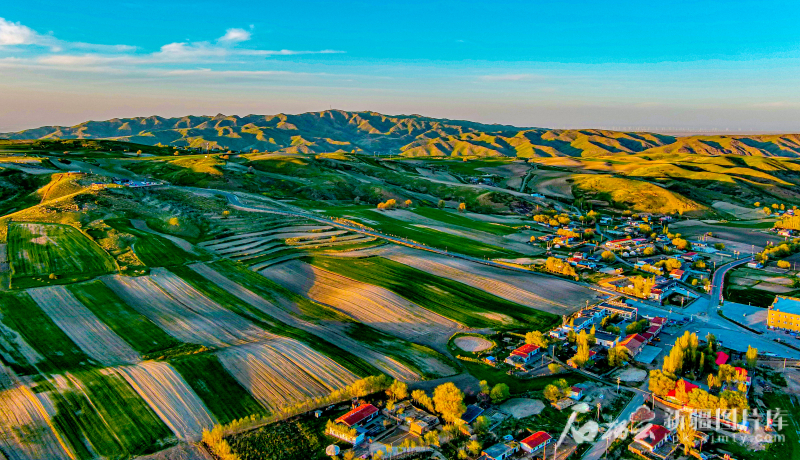
Photo taken on May 8, 2025 shows the colorful 12,000-mu (about 800 hectares) rainfed cropland in Pingdingshan Village, Zhaobishan Township, Mulei Kazak Autonomous County, northwest China's Xinjiang Uygur Autonomous Region.
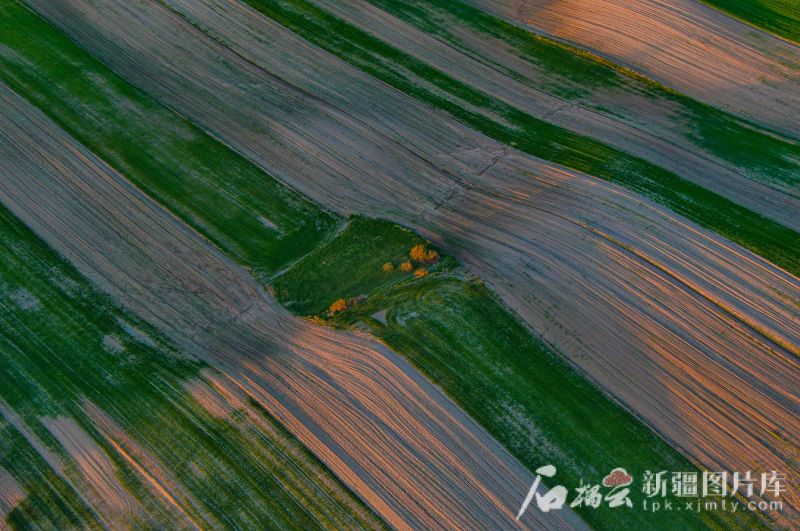
Aerial photo on May 8, 2025 shows a spring-sown dry field in the 12,000-mu (about 800 hectares) rainfed cropland of Pingdingshan Village, Zhaobishan Township, Mulei Kazak Autonomous County, northwest China's Xinjiang Uygur Autonomous Region.
As a rainfed agricultural region in the heart of Eurasia, the dry farming culture in the hilly areas of Mulei Kazak Autonomous County carries the profound heritage of Chinese agrarian civilization. Despite its location in an arid and semi-arid zone, the core area of Pingdingshan Village has become a stable "dryland granary" thanks to abundant spring water. The wheat, peas, and other crops grown here not only serve as the locals' "food basket" but also enchant visitors and attract photographers from across the country.
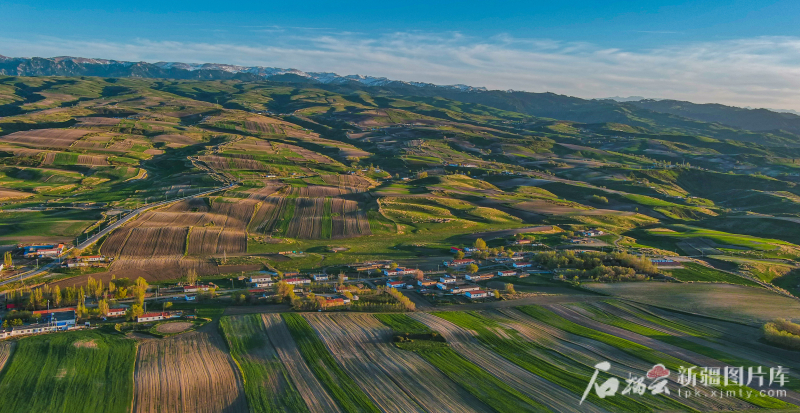
Aerial photo taken on May 8, 2025 shows an aerial perspective of the 12,000-mu (about 800 hectares) rainfed cropland in Pingdingshan Village, Zhaobishan Township, Mulei Kazak Autonomous County, northwest China's Xinjiang Uygur Autonomous Region.
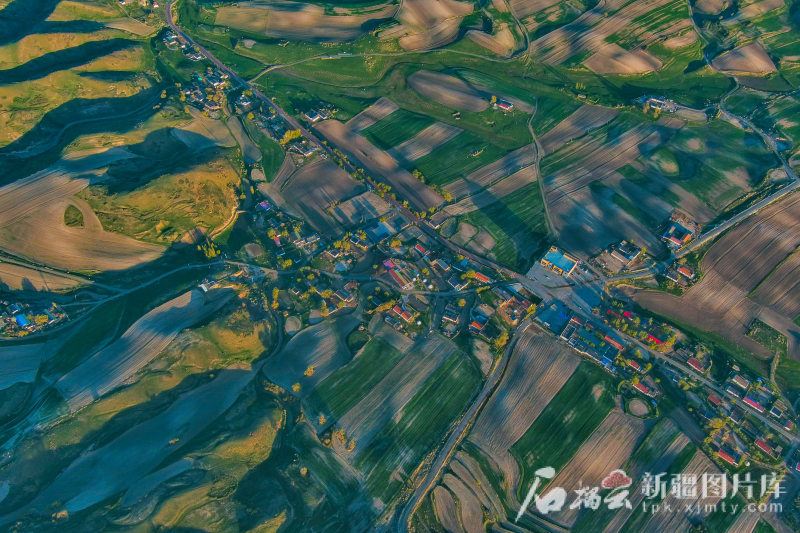
Aerial photo taken on May 8, 2025 shows a bird's-eye view of the 12,000-mu (about 800 hectares) rainfed cropland in Pingdingshan Village, Zhaobishan Township, Mulei Kazak Autonomous County, northwest China's Xinjiang Uygur Autonomous Region.
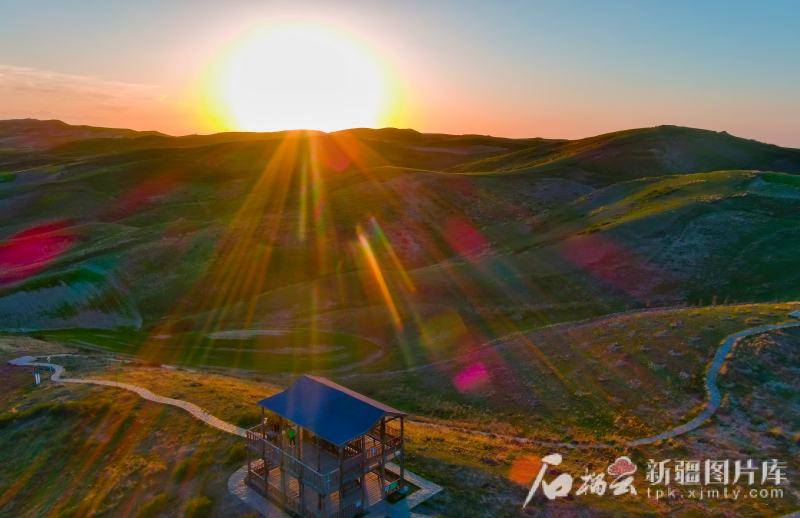
Aerial photo taken on May 8, 2025 shows tourists admire the sunset from a pavilion in Pingdingshan Village, Zhaobishan Township, Mulei Kazak Autonomous County, northwest China's Xinjiang Uygur Autonomous Region.
With 568 square kilometers and 580 million yuan (about 80.47 million U.S. dollars) in investment, the park merges farming heritage with tourism. Since 2016, when Mulei became a pilot county for integrated tourism, 67.36 million yuan (about 9.35 million U.S. dollars) has funded observation decks, trails, and immersive programs like "spring planting workshops" and "autumn harvest festivals," blending agricultural rhythms with cultural tourism.
(A written permission shall be obtained for reprinting, excerpting, copying and mirroring of the contents published on this website. Unauthorized aforementioned act shall be deemed an infringement, of which the actor shall be held accountable under the law.)









